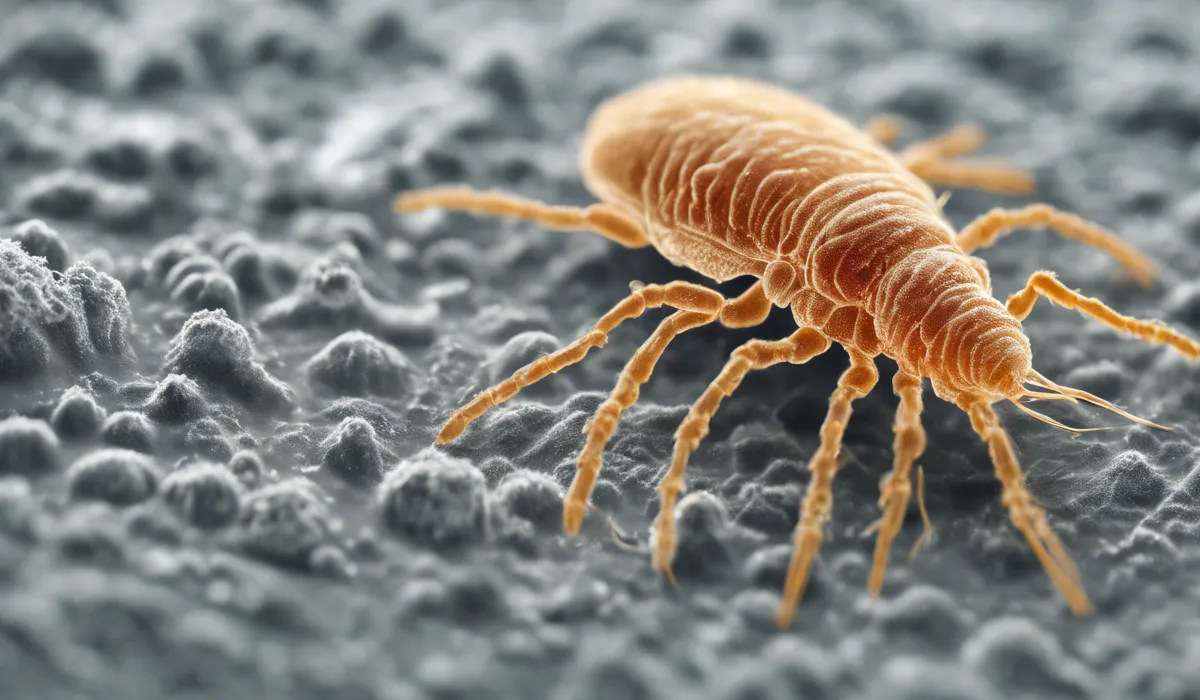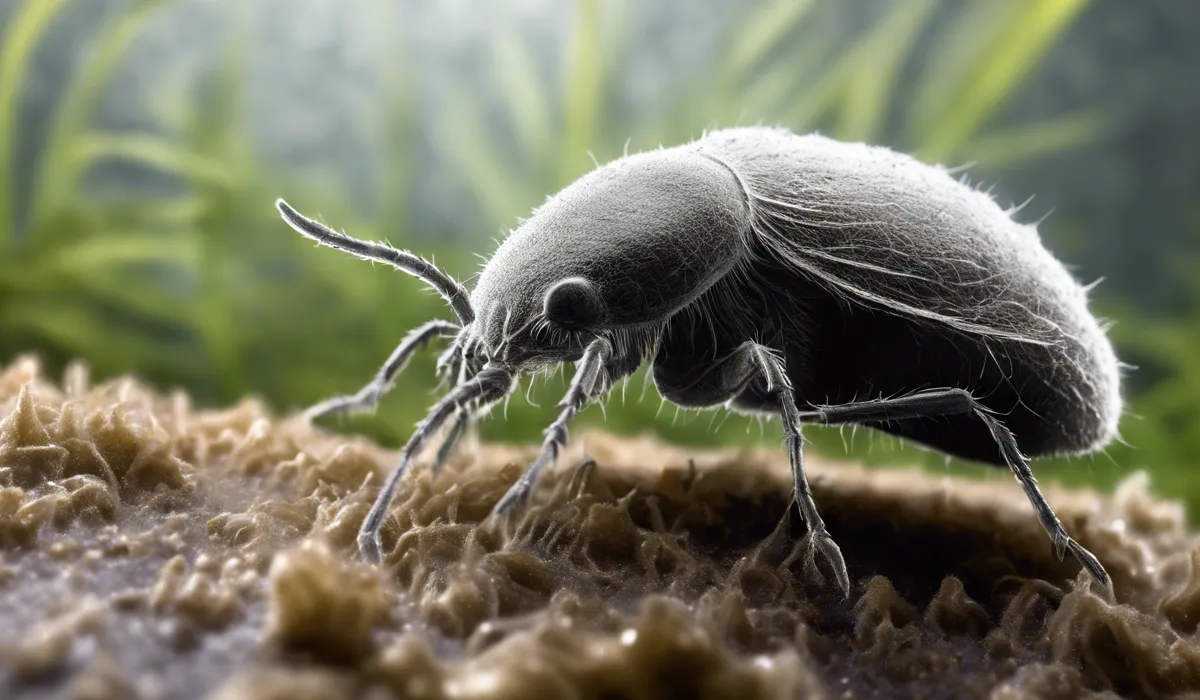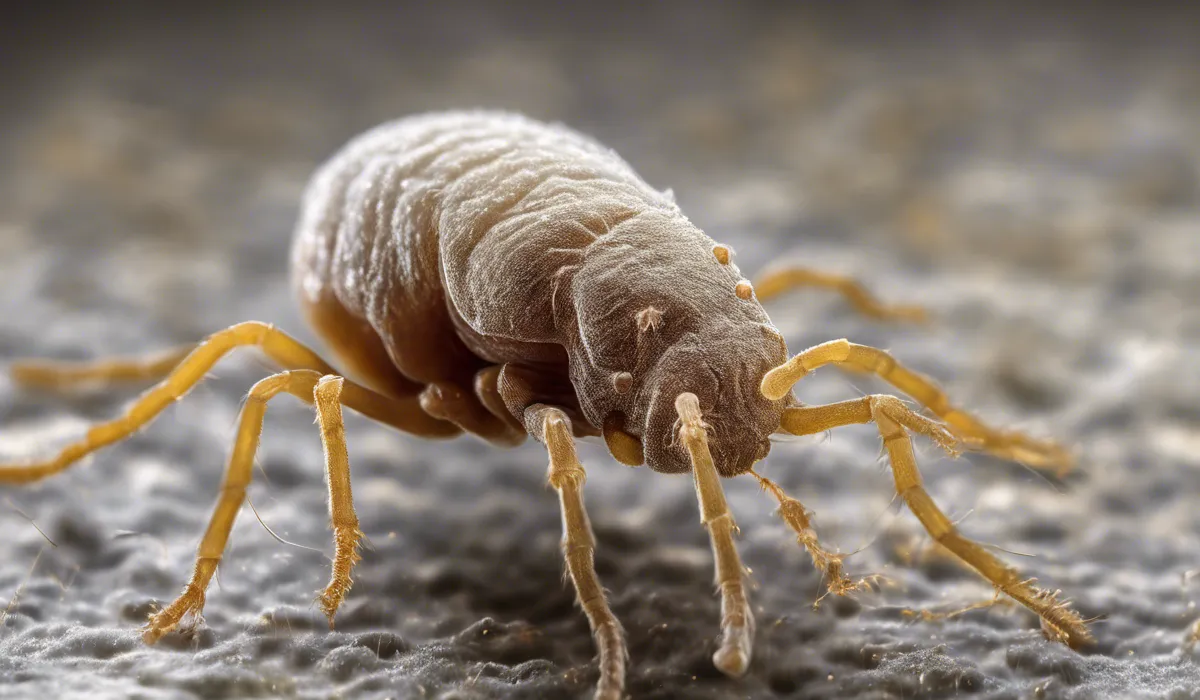Mold mites are tiny, nearly invisible pests, less than 0.3 mm long, with a creamy white or tan color and a somewhat elongated body. Under magnification, they appear as minute, soft-bodied organisms with long hairs, giving them a velvety look.
Identification of Mold Mites

Description of Size and Shape
Mold mites are incredibly small creatures, often requiring magnification to be seen clearly.
They are typically less than 0.3 millimeters long, which is smaller than a grain of salt. Imagine looking at a speck of dust; that is about the size of a mold mite.
Their bodies are slightly elongated, which can sometimes make them appear as tiny threads on surfaces where they are present.
Color Variations
The color of mold mites ranges from creamy white to tan. This pale coloring can make them blend in with their environment, especially on light-colored surfaces.
Their subtle coloration is one reason why they can go unnoticed for long periods, allowing them to thrive in moldy areas without detection.
Common Physical Characteristics
Under a magnifying glass, mold mites reveal more of their physical characteristics. They are soft-bodied organisms with long hairs that give them a velvety texture.
These hairs may be responsible for the allergic reactions some people experience in infested areas.
Mold mites also possess legs and antennae, which are common among many types of mites and insects, but due to their minuscule size, these features are not readily visible to the naked eye.
Mold Mites Habitat and Behavior

Typical Environments Where Mold Mites Are Found
Mold mites are most often found in areas with high humidity and the presence of mold. They thrive in environments such as kitchens, bathrooms, basements, and anywhere with poor ventilation and moisture problems.
These tiny pests seek out mold because it is their primary food source. You might find them on moldy foods, walls, or other surfaces where mold has begun to grow.
Their Relationship with Mold and Moisture
Mold mites have a symbiotic relationship with mold; the mites feed on the fungi, and in turn, the mold provides a habitat for them.
They require moisture to survive, so they are naturally drawn to damp areas where mold is likely to develop.
Managing humidity levels and mold growth in your home is essential for preventing and controlling mold mite infestations.
Lifestyle and Feeding Habits
The lifestyle of mold mites is quite simple. They spend their lives eating, reproducing, and living on the mold colonies they inhabit. These mites can rapidly reproduce in ideal conditions, leading to large populations in a short amount of time.
Their feeding on mold can sometimes be beneficial in cleaning up small amounts of fungal growth, but the allergens they produce as a byproduct can be problematic for homeowners.
Differentiating Mold Mites from Other Household Pests

Comparison with Dust Mites
While mold mites and dust mites are similar in size and shape, they differ in habitat and diet. Dust mites prefer environments with skin flakes and dander, such as bedding and upholstered furniture.
Mold mites, on the other hand, seek out mold as their food source. Dust mites are also associated with causing allergic reactions, which can be confused with the reactions caused by mold mite populations.
Identifying Signs of a Mold Mite Infestation
Recognizing a mold mite infestation can be challenging due to their tiny size. However, signs include a visible presence of mold in your home, especially if it appears to be dusty or furry, which could actually be a large number of mites.
Another indication is an increase in allergic symptoms among household members, which could be a response to the allergens produced by mold mites.
Tips for Distinguishing Mold Mites from Other Small Insects
To differentiate mold mites from other insects, look for their specific environmental preferences, such as areas with visible mold growth.
Using a magnifying glass can help to identify their distinct velvety appearance due to the long hairs on their bodies.
Pay attention to the color as well; mold mites tend to have a creamy white to tan coloration, which can help in distinguishing them from other pests.
FAQs About Mold Mites
What are the physical characteristics of mold mites?
Mold mites are tiny pests less than 0.3 mm long, usually creamy white or tan, and have an elongated body with long hairs that give them a velvety appearance under magnification.
Can you see mold mites with the naked eye?
Mold mites are nearly invisible to the naked eye due to their extremely small size, typically requiring magnification to be seen clearly.
What color are mold mites?
Mold mites are usually a creamy white or tan color.
How can you identify mold mites under magnification?
Under magnification, mold mites appear as minute, soft-bodied organisms with long hairs, which can create a velvety look.
What is the body shape of mold mites?
Mold mites have a somewhat elongated body shape.
Final Thoughts
Mold mites, barely visible at less than 0.3 mm, have a creamy white or tan appearance and an elongated shape.
When observed under magnification, these minute pests reveal a soft body adorned with long hairs that contribute to their distinctive velvety texture.
